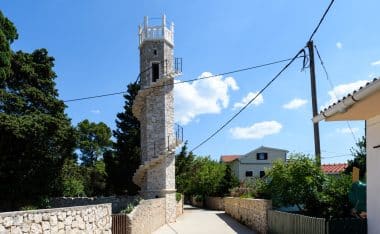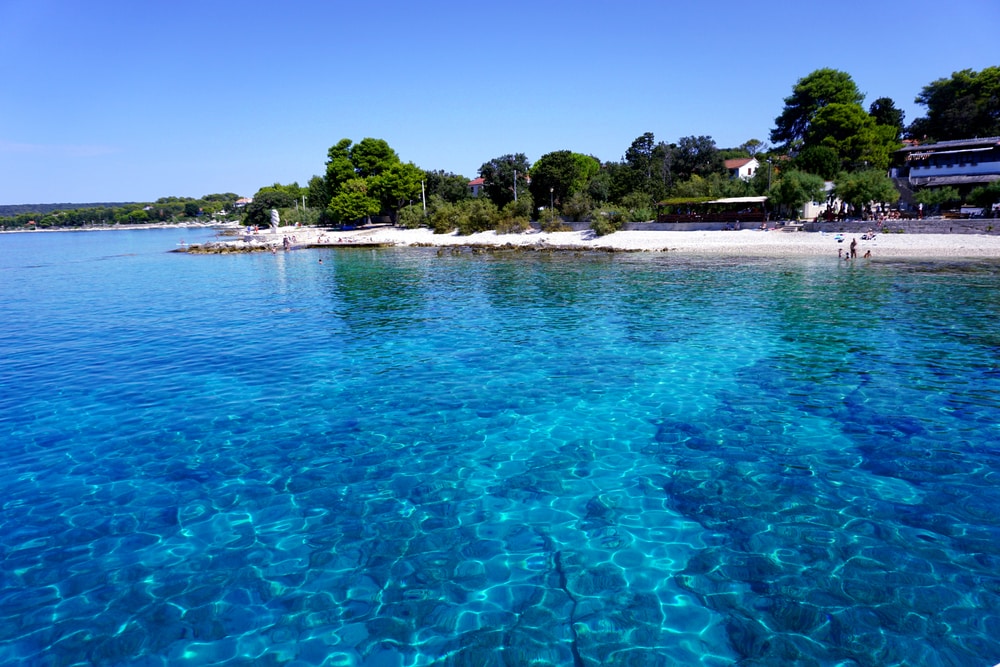The island of Silba (Italian name: Selve) is located south of the island of Lošinj in northern Dalmatia. It has an area of only 15 km² and a length of eight kilometres and is part of the Zadar archipelago. On the car-free holiday island, 300 people live in the island’s capital of the same name. Original beaches with picturesque bays, tranquillity and attractive hiking trails are the main reasons why holidaymakers visit the small island. With a bit of luck, you can even spot dolphins in the bays off Silba.
Geography and history
Silba was already settled in Roman times. The name of the island may be derived from the Latin word for forest. The small island also bears the title “Gateway to Dalamatia” and experienced its most pronounced heyday in the 17. and 18th century. At that time, the number of inhabitants was four times as high as it is today. Seafaring helped the island to considerable wealth. With the beginning of steamships, however, the inhabitants then shifted to sheep breeding and fishing.
Silba has an elongated shape and is only 700 meters wide at its narrowest point. The vegetation on the island shows a very varied appearance. Pebble beaches, sandy beaches and small rocky bays alternate on Silba. A large part of the island consists of Cretaceous limestone.
Beaches and places of interest on the island of Silba

On the south side of Silba spreads the wide beach of Pocukmarak. In a small café you can buy cold drinks and snacks. From the beach, a short walk will take you to the church of St. Mark. The best view of this church can be enjoyed from the small bay Porat Sveta Marka. It is also popular as an anchorage for leisure yachts. The Dobre Voda bay is also beautiful. But since it is difficult to reach, there are no larger tourist gatherings here and especially those seeking peace and quiet will find a small paradise here.
Another secluded bay is Nozdre, which consists of two separate parts. While one part is a pure sandy beach, the second part of the beach consists of a sand-gravel mixture. Cafés or restaurants are completely absent here. The most easily accessible is the beach of Sotorisce. The crystal clear water here usually shimmers light green. If you want to pursue water sports activities, you will find a wide range of activities here. Among other things, rowing boats are rented out and there are courts for football, basketball, table tennis and beach volleyball.
A landmark of the island is the Torretta Marinich, a hexagonal observation tower. It once belonged to the garden of Captain Pietro Marinich (1816–1897) and is accessible by an external spiral staircase. From here you can see almost the entire island. The busiest thing on Silba is around the bustling port of Žalić and on the village square with a church worth seeing. Several restaurants, cafés, bars and shops are lined up here. There is also a post office, a doctor and a pharmacy.
How to get to the island of Silba
Every day, several boats and ferries depart from Zadar to the island of Silba. In the summer months, there are also excursions to the neighbouring islands as well as to Rijeka and Pula on the mainland. On the island itself, you can only move on foot or by bike, unless you have rented your own boat. In general, the Croatian islands offer ideal conditions for an extensive sailing trip.
Excursions
Of course, you can spend your entire holiday on the island itself, but day trips by boat to the larger islands such as Lošinj or to one or the other pretty town on the mainland are recommended. Lošinj went down in history as an imperial island and for a long time was the second most important port on the Adriatic after Trieste . It is also known for its medicinal herbs, scents and aromas.
Zadar has plenty of attractions, including the 9th-century Church of St. Donatus and the remains of the Roman Forum. Several beautiful houses and palaces have also been preserved from the Venetian era. Bathing pleasures are promised here by the Kolovare beach.
No less remarkable is the historical heritage of Pula. The local amphitheater is one of the largest of its kind and is surprisingly well preserved. The Temple of Augustus and the Cathedral of the Assumption of the Virgin Mary should not be missed on any city tour. In the old town, you will come across filigree Roman floor mosaics. On the beaches in the Verudela district, the rare monk seals feel at home.
Accommodation on Silba
The most common form of accommodation on Silba is private apartments or holiday flats or entire holiday homes. In addition, there are smaller guesthouses and, of course, hotels. Last but not least, there is the option to charter a sailboat and spend the night there and sail from bay to bay during the day.


